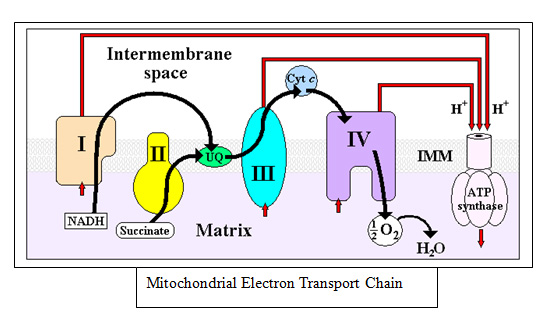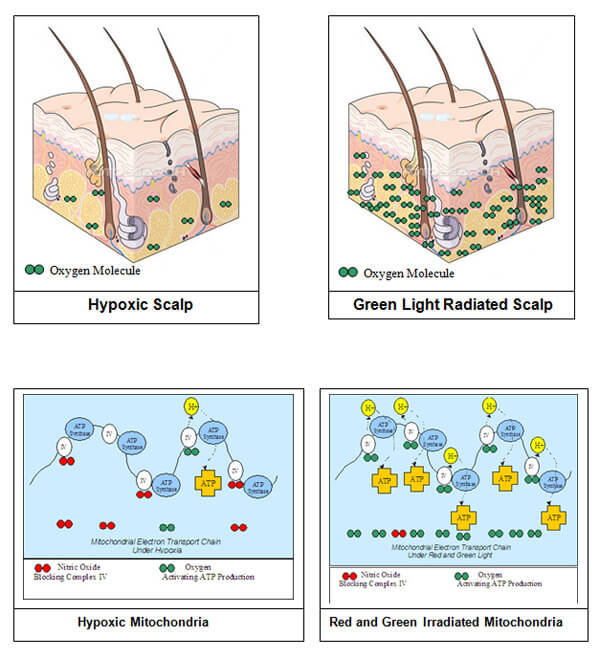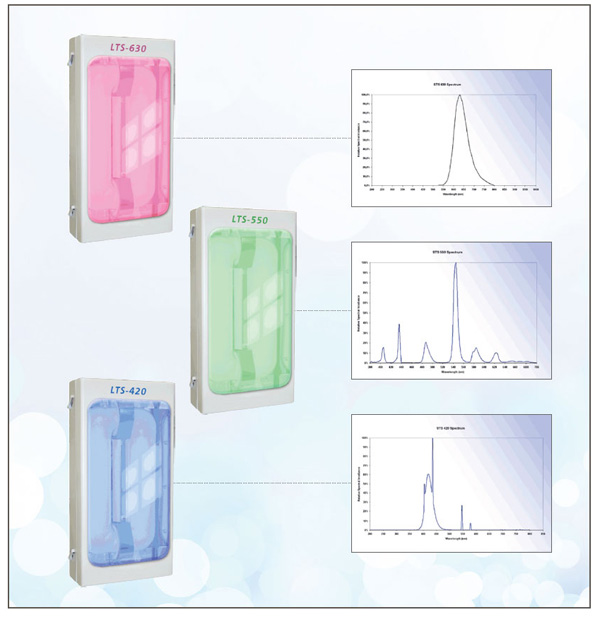The Hair Cycle
Hair grows in groups of 1 to 4 hairs called hair follicles. We are born with all the hair follicles we will ever have in the scalp (approximately 100,000). Hair follicles replenish themselves by going through three phases, the Anagen phase; Catagen phase; and Telogen phase, known as the hair cycle.
This is the reason why hair grows to a particular length and thickness. The duration of the Anagen phase, between 2 to 6 years, determines the length of the hair and the hair bulb determines the hair shaft diameter. The growth rate is approximately 1cm per month.

Anatomy
Hair is much more complicated than it appears. It helps transmit sensory information and creates gender identity. Hair is important to the appearance of men and women. There is hair on all the major visible surfaces of the body but the hair on the head is the most likely to be lost.
Structure of the hair
Before considering the scalp as a whole, it is relevant to consider the structure of the hair follicle. Hair follicles are the prize in hair transplant surgery the skilful harvesting and replanting of them is the essence of high quality hair transplantation.
The hair follicle
For the above reason, in modern hair transplant surgery for male pattern baldness, great emphasis is placed on the follicular unit as a discrete entity.
Laser Hair Therapy
Photo-regeneration of Scalp Tissue and Hair Regrowth
The simultaneous applications of both green and red light can revitalize scalp tissue by increasing the amount of oxygen in the tissue and stimulating the production of cellular energy.
Hair Loss and Hypoxia
It has been demonstrated that oxygen deficiency (hypoxia) exists in balding scalp, and that the microvasculature around the follicle in balding areas is deficient compared to the microvasculature around follicles with normal hair growth.
It is believed by many that local tissue hypoxia may be the underlying pathophysiology by which age, genetics, and androgens interact to cause baldness. In one study1 of men with male pattern baldness it was demonstrated that the transcutaneous PO2 was significantly lower in bald frontal scalp than hair bearing scalp (nearly a 2:1 ratio of P02 in the hair bearing scalp). Oxygen starvation leads to limited hair growth and compromised cellular repair mechanisms.
The effects of DHT in male pattern baldness are related to the microvasculature deficiencies. The increase in androgen (DHT) production in the scalp area inhibits mitosis, and induces insulin sensitivity in the follicular area. This insulin resistance further induces vasoactive substances that cause microvascular insufficiency and local tissue hypoxia with progressive miniaturization of hair follicles.
Once the oxygen starvation is initiated by DHT, the energy production within the cells in the hypoxic area is also shut down. Energy in the form of ATP is required for mitosis and cellular repair, and 80% of the energy production within a cell comes from the organelle called the mitochondria. Under hypoxic conditions the mitochondria shut down as a survival mechanism.
Hair regrowth requires that we overcome the hypoxia caused by excessive androgen production, and the purpose of the red and green light is to reoxygenate the tissue and reinvigorate the mitochondria so energy production can resume.
Hypoxia and Minoxidil
Minoxidil was originally developed as a vasodilator for cardiac conditions since it has two forms of action. As a potassium-ATP (KATP) channel opener it can relax the walls of blood vessels allowing greater blood flow. KATP channel openers also act in a more microscopic way to open the membranes within cellular mitochondria to increase ATP production.
It makes intuitive sense that a vasodilator will increase the blood flow to an area and that this will help overcome hypoxic conditions by pumping more oxygen containing blood to the area. However not all vasodilators have worked well in stimulating hair growth. For example, nitroglycerin is an excellent vasodilator, but the transcutaneous application of this vasodilator to the scalp has not shown hair regrowth results. The reason for the failure of some vasodilators to overcome the hypoxia in balding scalp is that the mitochondria are still being signaled to shut down energy production. Some reoxygenation by increased blood flow takes place, but energy production is not necessarily stimulated. Inflammatory mediators keep the mitochondria from taking advantage of the oxygen contained in the newly perfused blood.
It is the combined mode of action of Minoxidil that addresses the hypoxia; increased blood flow and increased ATP production within the mitochondria.
Hypoxia and Red Light
The use of red light from LED and laser sources has been demonstrated to increase hair regrowth. The source of the light is unimportant (laser, LED, lamp) since it is the photon that does the work, not the photon-generation equipment. At the quantum level each photon is fungible (i.e. indistinguishable from its source). Examination of a photon at 615 nm cannot reveal if the sun, a laser or a lamp produced it. It is the interaction of the photon with a chemical structure that results in phototherapeutic action.
Red light is effective for hair regrowth because it can stimulate ATP production. This ATP production increase occurs though a process of photodissociation of nitric oxide from the QIV complex of the electron transport chain in the mitochondria. Although the process sounds quite complex it can be easily visualized.
The production of ATP within the mitochondria takes place in a chain of enzymes called the electron transport chain. On one end of this chain is an electron rich molecule (NADPH or succinate) and on the other end of the chain is an oxygen molecule, which acts as an electron acceptor or “battery”. The oxygen molecule acts to drive the electrons down the chain. As the electrons move down this chain of enzymes hydrogen ions are pumped across a membrane, and the accumulated pressure of these hydrogen ions causes a final enzyme called ATP synthase to convert ADP to ATP. This ATP is the energy currency for all cellular activity.
Under hypoxic conditions the walls of the mitochondria are signaled to produce a diatomic gas molecule called nitric oxide. This nitric oxide acts a “governor” or speed control for ATP production. The nitric oxide molecule can position itself on the electron transport chain complex normally reserved for molecular oxygen. Nitric oxide cannot act as an electron acceptor or “battery” for the electron transport chain so hydrogen ion pumping and ATP production sits idle. Nitric oxide is a competitive inhibitor of oxygen for ATP production.
The illustration below shows this energy producing process.
Note that in the functional electron transport chain illustrated above the oxygen molecule literally “sits” on enzyme IV. Under conditions of stress (hypoxia, injury) nitric oxide sits in this position and no hydrogen ions are pumped and no energy production takes place.
Red light interacts with the nitric oxide-enzyme IV complex to photodissociate or eject the nitric oxide molecule and this makes the position open for an oxygen molecule. When the oxygen molecule replaces the nitric oxide the “battery” for energy production is back in place and ATP production begins. Of course oxygen must be available to replace the ejected nitric oxide molecule.
In cells under hypoxic stress the mitochondria shuts down energy production by substituting a nitric oxide molecule for oxygen in the electron transport chain. Red light photodissociates this nitric oxide away from the chain and allows oxygen back into the chain to resume ATP production. We know that red light can clear the way for ATP production to proceed, but we also need fresh oxygen in the area to complete the reaction. This is the purpose of green light as discussed below.
It is worth noting that the pressure of the hydrogen ions being pumped by the oxygen is responsible for ATP production. Since hydrogen ions are charged this results in a voltage potential across the membranes illustrated above. Minoxidil works to increase energy production by allowing divalent calcium ions to cross the mitochondrial membranes so that even with a low potential due to insufficient hydrogen ions, some ATP is still produced because the calcium ions boost the apparent potential. Even though the Minoxidil allows some ATP production it is limited to relatively low levels through this calcium compensation mechanism.
Green Light and Hypoxia
As we have illustrated above the energy producing ability of a cell to grow and repair is limited by oxygen insufficiency in two ways. First, the microvasculature is insufficient to provide blood flow to the follicle. Second, the hypoxia has shut down the energy production unit by limiting oxygen access to the electron transport chain through the nitric oxide oxygen inhibition mechanism.
Increasing the oxygen availability to tissue can be accomplished by vasodilators but also by tapping into the large reservoir of oxygen carried by the blood in the papillary dermis. Green light at 550 nm (the middle of the Q-band hemoglobin absorption) has been demonstrated to photodissociate molecular oxygen from oxyhemoglobin, and this freed oxygen is available to perfuse tissues even where the vasculature is deficient.
Hemoglobin carrying oxygen can be visualized as a central body with chemical arms that wrap around the oxygen molecule. These chemical arms can absorb select wavelengths of light that cause the arms to “straighten” out thus releasing the oxygen molecule. There is always a tension between the hemoglobin arms and the oxygen, and when the PO2 becomes low the oxygen is able to break this tension without external chemical signaling. The ability of visible light to cause the chemical arms to release the oxygen molecule follows the Q band absorption of oxyhemoglobin which exists from around 540nm-570 nm. The advantage of the 550 nm radiation is that it is absorbed 35 times more than red light at 615 nm and 150 times more than red laser radiation at 670 nm. Green light has greater quantum efficiency for photodissociation of oxygen than red light, and the probability of its absorption by hemoglobin is also much higher.
The photodissociation of oxyhemoglobin into oxygen and hemoglobin can be spectacularly efficient. A 65% quantum efficiency at 550 nm has been reported, although the original oxygen-releasing hemoglobin molecule recaptures much of the released oxygen.
The papillary dermis carries 10 times the amount of oxygenated blood that is necessary for metabolic processes in the dermis. This is due to the construction of the vascular system to allow for the blood to be cooled by its proximity to the skin. Green light is able to penetrate the skin to depths of 6-8 mm without absorption by other chemical species, and when it interacts with the reservoir of blood in the papillary dermis the result is increased PO2 which suffuses toward the upper papillary dermis where the hair follicles reside.
The effects of green light are illustrated below for both the scalp matrix and the mitochondrial ATP production.

Complementary actions of Red and Green Light.
The ability of green light to increase PO2 in hypoxic tissue has been recognized for application in photodynamic therapy where extreme ROS production causes hypoxia. In the case of hypoxic scalp we can see the benefits of red and green light mimic the activities of Minoxidil in that there is tissue reoxygenation provided by the green light (similar to the vasodilation effects of Minoxidil) and the red light provides increased ATP production by removing nitric oxide from the electron transport chain (Minoxidil increases ATP production by shifting calcium ions to make the hydrogen ion potential appear higher).
The advantages of using light for reoxygenation and stimulation of new energy production is that there are no chemical side effects and the energy produced can be stored for longer-term needs. Essentially when used with an ongoing program of topical vasodilators, anti-androgenics and antioxidants the light therapy provides a bolus therapy for tissue regeneration. The energy producing effects from a 5-minute procedure will continue for hours after the procedure, and this will build up large stores of ATP for tissue and vascular regeneration. The light therapy is to provide for a powerful source of energy for remodeling the scalp, and the ongoing topical therapies will allow for continued growth.
Topical applications of KATP vasodilators like Minoxidil can slowly but reliably move the hypoxic tissue from energy insufficiency and help balance the deleterious hypoxic effects caused by excess DHT activity. However the addition of light treatments boosts and complements the activity of these agents and provides a strong platform for scalp remodeling.
The key benefits of Red and Green treatment in remodeling the scalp relate to the hypoxic effects in the mitochondria. It is mentioned above that the mitochondria puts a “governor” on ATP production and this “governor” of nitric oxide will remain until the ratio of ADP/ATP drops significantly. During the Red and Green treatments we provide a bolus of ATP production that accumulates ATP and the signaling to the nitric oxide “governor” will stop. Whereas Minoxidil can decrease the ADP/ATP ratio in a drip-wise fashion, the light treatments act more like a hose to decrease this ratio and more quickly stabilize the mitochondria and amplify the effects of the topical Minoxidil treatments.
Optimal Treatment Regimens
The optimal use of Red and Green light treatments is patient specific; in general the longer the hair loss condition has been established the more treatment will be required to see results. Daily treatments for the first week would give the quickest regeneration of the mitochondrial ATP functions, but 3 Tx/week will give good results. After six light treatments the optimal treatment regimen is 2 Tx/week for and additional six treatments. There is no downside to continuing the treatments.
Typically the hypoxia in the follicular area will have increasingly long lasting effects with time. Initially the hypoxia leads to some hair loss, then some cells go into senescence (sleeping mode) and some cells will go into apoptosis (cellular death). It is difficult to recover hair growth where apoptosis has occurred, but not impossible. Stem cells can migrate into the area if the hypoxia is under control, and some hair restoration can take place.
The continued use of topical agents to stop the hypoxic effects of DHT (anti-androgen therapy), and the use of topical agents to increase the oxygen flow and ATP production (vasodilators and KATP channel openers) are essential to maintain regained hair. Another deleterious effect of hypoxia caused by DHT includes the generation of damaging reactive oxygen species (superoxide anion, hydrogen peroxide) and the application of antioxidants will ameliorate the effects of these reactive species.Light Hair Therapy
Light Hair Therapy is based on the established scientific principle that light, even ordinary light, has an effect on cell function. Scientists have been aware of this fact for hundreds of years. We witness this during the summer months when we are exposed to longer days of natural sunlight. During this period, our hair tends to grow faster and often appears thicker. Light, or lack of thereof, influences our moods and light deprivation; it can trigger mood disorders, such as depression.
Light is powerful: it can destroy and it can heal. Remove a plant from the sun’s rays and it withers and dies. Place a newborn infant with jaundice under a “blue light” and the jaundice disappears. Clinical studies have indicated that light therapy may stop the progression of hair loss and it may promote hair regrowth.
The NeoLTS Light Therapy System utilizes patented magnetic induction lighting technology to produce high intensity light at specific therapeutic wavelengths with unique patented green and red light spectrums.
Light therapy may stimulate the tissues of the scalp, significantly increasing the number of red corpuscles that deliver life-giving oxygen and nutrients to the hair bulb. It sets in motion a chain reaction of cellular events, increasing protein synthesis, cell division, tissue regeneration and micro-circulation of the blood supplies. This will sweep debris from the hair shaft, swell the cortex and close the cuticle, and it might potentially increase hair density.

Most evidence in the medical literature regarding light based therapy and hair loss outcomes is observational and although good results do occur, such results are not as consistent as we would like it to be. Prospective randomized case-controlled studies in this subject are lacking.
To find out more about Light therapy and if this will help your hair loss problem in your particular case, please call us for a complimentary consultation.




